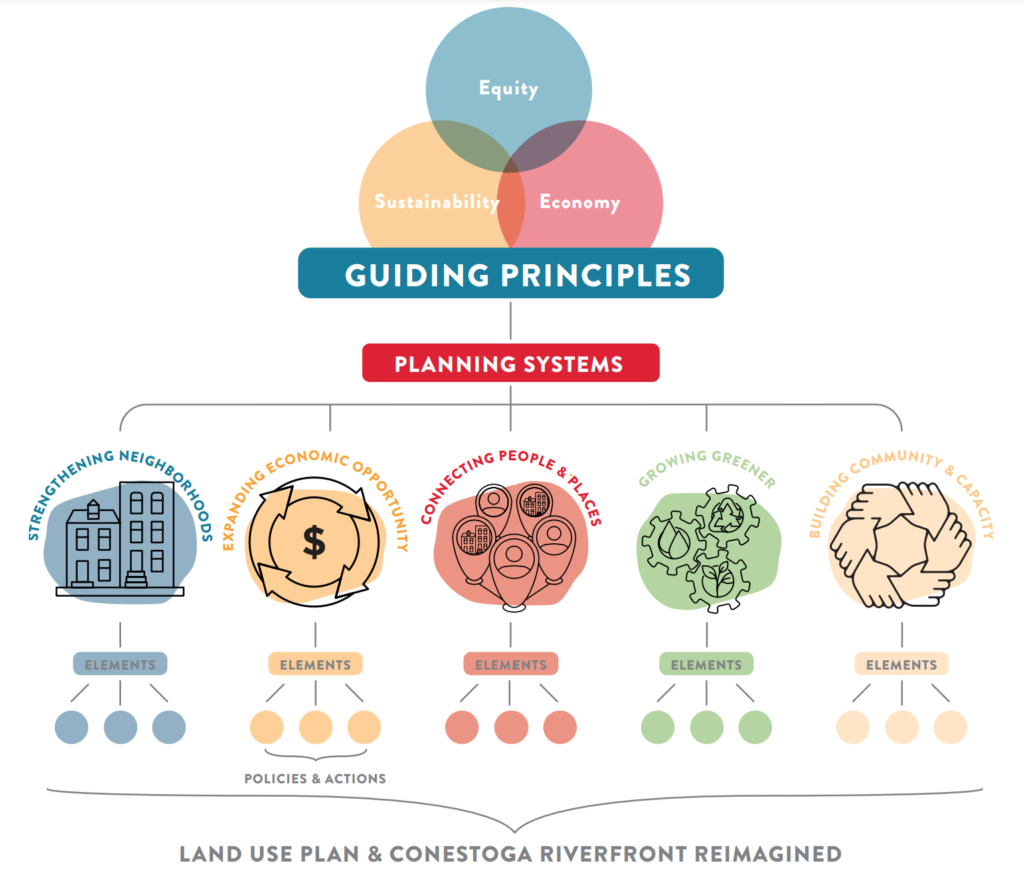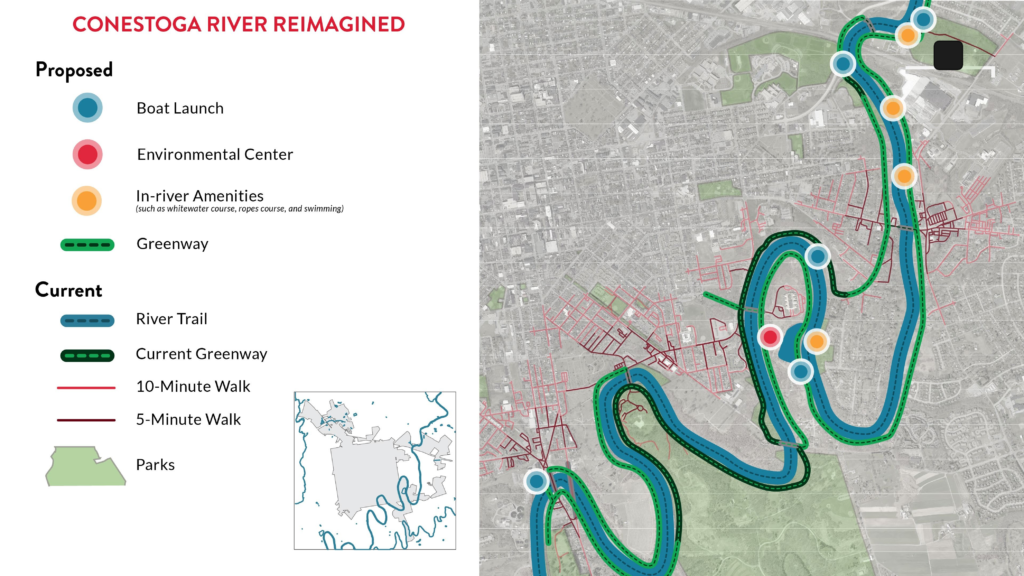2023 marked a significant milestone for the City of Lancaster, PA: it adopted Our Future Lancaster, its first comprehensive plan in 30 years. I was honored to play a small role in developing the plan as a consultant to the city.
A community of approximately 60,000 residents, Lancaster was established in 1730 and is one of the nation’s oldest inland cities. It is the historic center of Lancaster County, which is renowned for its scenic landscapes, productive farmland, and the cultural heritage of its Amish and Mennonite communities. The city’s historic legacy, architecture, and largely intact collection of buildings, neighborhoods, and street grid are a significant part of what makes Lancaster a special place today. Lancaster’s diverse population is about 40 percent Latino, 17 percent African American, and includes one of the largest per capita populations of refugees in the United States.
Our Future Lancaster was prepared through a 2 ½ year process that included extensive community engagement. The city tallied over 14,000 interactions with residents during this process, including: 3,950 meetings or events, 2,610 website users, 6,770 social media engagements, 990 survey responses, and involvement of more than 100 organizations and stakeholder groups. The resulting plan genuinely reflects the shared values, priorities, and aspirations for the future of the Lancaster community.

Our Future Lancaster identifies three overarching principles – social equity and inclusion, sustainable and healthy environment, and access to economic opportunity – that will guide implementation over a 20-year time horizon. At the City Council adoption hearing in October, Community Planning and Economic Development Director Chris Delfs listed what he considers to be the most important plan outcomes:
- Encouraging more housing diversity and quality
- Encouraging commercial uses that serve their surrounding neighborhoods
- Creating a compelling and coherent vision for the Conestoga riverfront
- Placing environmental sustainability at the heart of the city’s economic success
- Prioritizing green infrastructure, parks and open space
- Promoting safe, efficient transportation of all types and modes
- Advancing resident health, wellness and social engagement
In her letter introducing the plan, Mayor Danene Sorace identified “a shift in how we envision the Conestoga River” as “perhaps the most visionary piece of the plan.”

While the plan contains many innovative qualities, one that stands out for me is its commitment to an age-friendly community. In December 2021, a diverse coalition of Lancaster organizations, stakeholders, and residents completed the Age-Friendly Lancaster Action Plan using the World Health Organization’s Age-Friendly Cities and Communities Framework. The Action Plan identified four priorities: Housing Creation & Preservation, Pedestrian Safety/Vison Zero, Intergenerational Connections, and Access to Services/Information & Outreach. It also set a goal to integrate the perspectives of older adults into the comprehensive planning process. As a result of the process, age-friendly policies and actions are incorporated throughout Our Future Lancaster. Examples include walkability and pedestrian safety (such as implementation of the city’s Vision Zero Plan); intergenerational parks and recreational facilities; and a focus on housing choice, affordability, inclusion, and innovation. I don’t know of any other comprehensive plan that has addressed the needs of older adults to the extent as Our Future Lancaster, which I believe can become a national model for smaller cities to incorporate age-friendly policies into their plans.
In closing, I would like to congratulate the City of Lancaster, its partners, and residents on a truly significant achievement. The test of any comprehensive plan is how it is turned into reality through action. I look forward to following the city’s implementation progress in 2024 and the years beyond!
